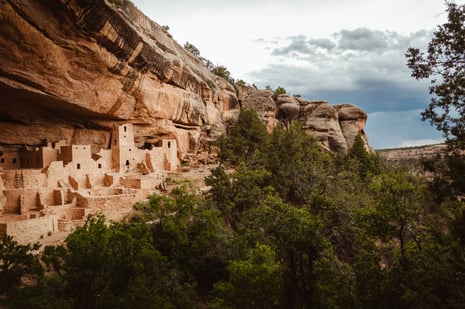Mitákuye Oyásʼiŋ is a Lakota phrase that roughly translates to “all my relations” or “we are all related.” It is in this phrase, simultaneously brief and full of depth, that we can begin to comprehend the values of interconnectedness and reciprocity that anchor Indigenous worldviews and knowledges.
The United Nations Permanent Forum on Indigenous Issues has intentionally not adopted a definition for “Indigenous'' due to the global diversity of Indigenous cultures. As such, and due to my identity as a non-Native person, I cannot explain what it means to be Indigenous. What I will say, with reference to the U.N., is that Indigenous peoples throughout the world have defining cultural traits, such as unique languages, knowledge systems, and beliefs, strong links to territories and surrounding natural resources, a nd a resolve to maintain and reproduce their ancestral environments and systems as distinctive peoples and communities. Additionally, Indigenous peoples throughout the globe share the somber fact that their history is riddled with acts of survival against colonizing states’ efforts to eradicate them (see: An Indigenous Peoples’ History of the United States).
nd a resolve to maintain and reproduce their ancestral environments and systems as distinctive peoples and communities. Additionally, Indigenous peoples throughout the globe share the somber fact that their history is riddled with acts of survival against colonizing states’ efforts to eradicate them (see: An Indigenous Peoples’ History of the United States).
While Indigenous communities and tribal nations vary widely in culture, tradition, history, language, governance, so on and so forth, interconnectedness and reciprocity are common threads in many Indigenous cultural worldviews, which set the foundation for their relationship with the Earth.
When I was getting my Master’s degree at Utah State University, I had the privilege and honor of engaging Indigenous worldviews and knowledges, and working with members of the Northwestern Band of the Shoshone Nation. My research compared how climate change and environmental problems are discussed differently between Indigenous and Western peoples in the news media. It was through this process that I became intimately familiar with Indigenous Traditional Ecological Knowledge (TEK). While acknowledging the diversity within Indigenous communities, TEK can be thought of as a catch-all term for Indigenous environmental knowledges.
There are many valuable and differently contextualized definitions of TEK formalized by Indigenous scholars. Perhaps ironically, the U.S. Fish and Wildlife Service (USFWS) definition felt comprehensive and understandable to the layperson, and to people less familiar with Indigenous culture. USFWS says: “[TEK] refers to the evolving knowledge acquired by indigenous and local peoples over hundreds or thousands of years through direct contact with the environment. This knowledge is specific to a location and includes the relationships between plants, animals, natural phenomena, landscapes and timing of events that are used for lifeways, including but not limited to hunting, fishing, trapping, agriculture, and forestry. TEK is an accumulating body of knowledge, practice, and belief, evolving by adaptive processes and handed down through generations by cultural transmission, about the relationship of living beings (human and non-human) with one another and with the environment. It encompasses the world view of indigenous people which includes ecology, spirituality, human and animal relationships, and more.”
This place-based, generationally-accumulated, bound-to-spirituality, environmental knowledge stands in contrast to Western science, which is often text-based, reductionist, hierarchical, categorical, and devoid of spiritual influence. It is not to say that one is better than another, but it is to say that they are different.
There is an incomprehensible, inherent value of Indigenous TEK that has only recently been recognized by Western scientists, whose natural science ‘discoveries’ have often been known by Indigenous communities for hundreds, if not thousands of years. Could you imagine the breadth of our global environmental knowledge if we gratified TEK?
A distinct example of this relates to wildfire, a consistent concern for our Intermountain West communities. Indigenous communities have been practicing what we call ‘controlled burning’ for centuries, echoing that “fire is medicine.” When settlers colonized westward, land management agencies such as the U.S. Forest Service (USFS), began suppressing fire, presuming all fires are bad. Suppression on our fire adapted landscapes has catalyzed the catastrophic mega-fires we’ve seen over the last several decades, due to increased forest fuels and drought from climate change. As of recently, USFS branches have been co-managing forests with western U.S. tribes to great success, who hold ancestral forest management knowledge, or TEK.
It has become common knowledge that while Indigenous peoples only represent 5% of the global population, they protect roughly 80% of the world’s biodiversity. Read that again. Given the 69% decline in wildlife populations between 1970 and 2018, that’s significant. Take this as a signal to advocate for Indigenous sovereignty, self-determination, right to their lands, and to revere Indigenous TEK, as in doing so, you’re helping the planet.
I would like to use this space to recognize the Ute Tribes, the Indigenous peoples whose lands we currently reside on. Visit this website to learn more about the Ute Tribes, or visit the Ute Indian Museum in Montrose to learn more from members of the Ute community.
Additionally, Darren Parry, former Chairman of the Northwestern Band of the Shoshone Nation, will be speaking with our community at the second annual Don & Jennifer Holzworth Climate Speaker Series. His discussion will be on February 16th, and you can register for free here.
If you would like to read my thesis research, you can find it here: Reversing the Gaze: Using Indigenous and Western Worldviews to Compare Coverage of Climate Change and Indigenous Peoples in the News Media.
Gina McCrackin is the Climate Action Collaborative Manager at Walking Mountains Science Center. The Climate Action Collaborative is working to reduce greenhouse gas emissions in Eagle County 50% by 2030 and 80% by 2050.






